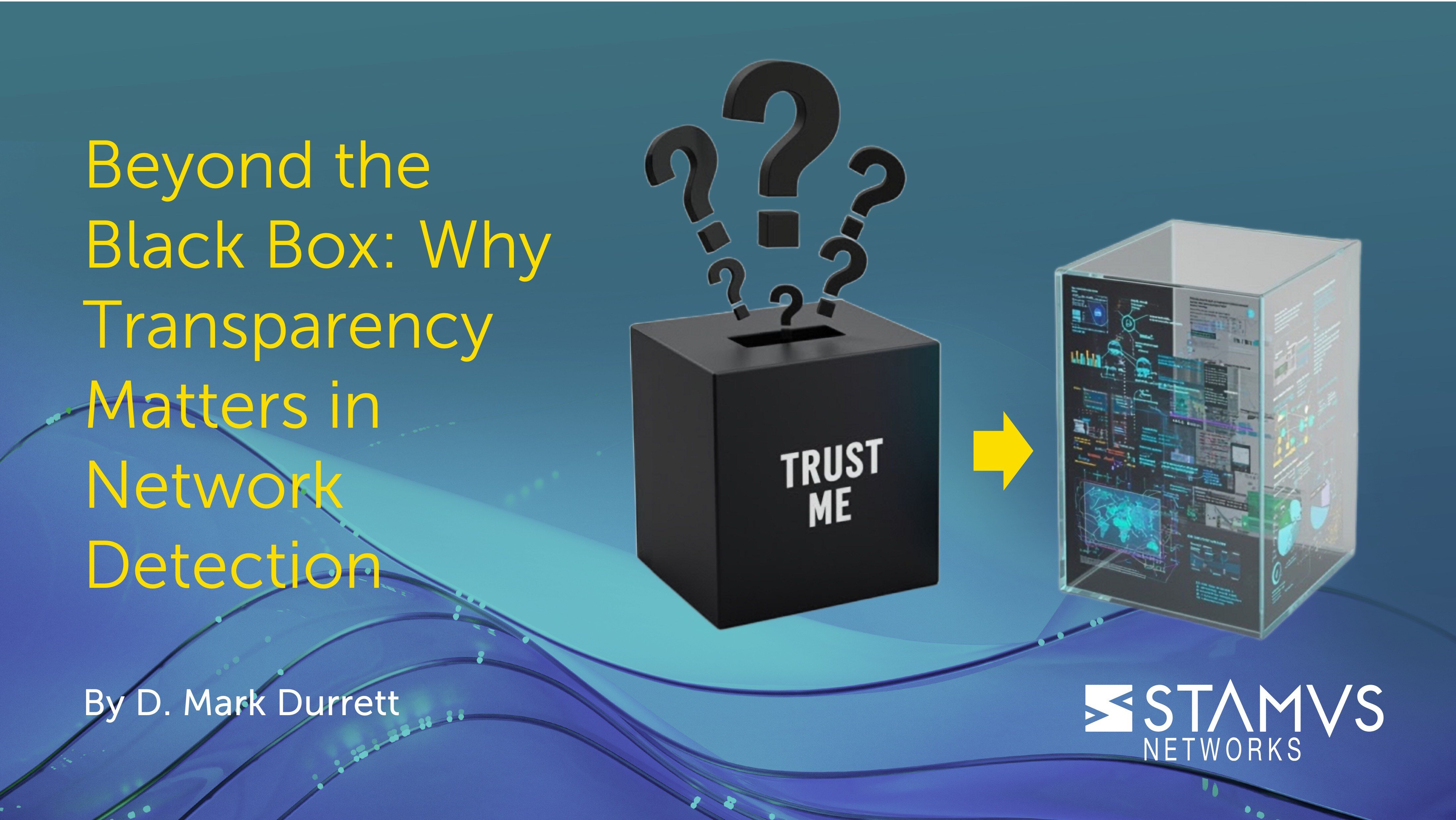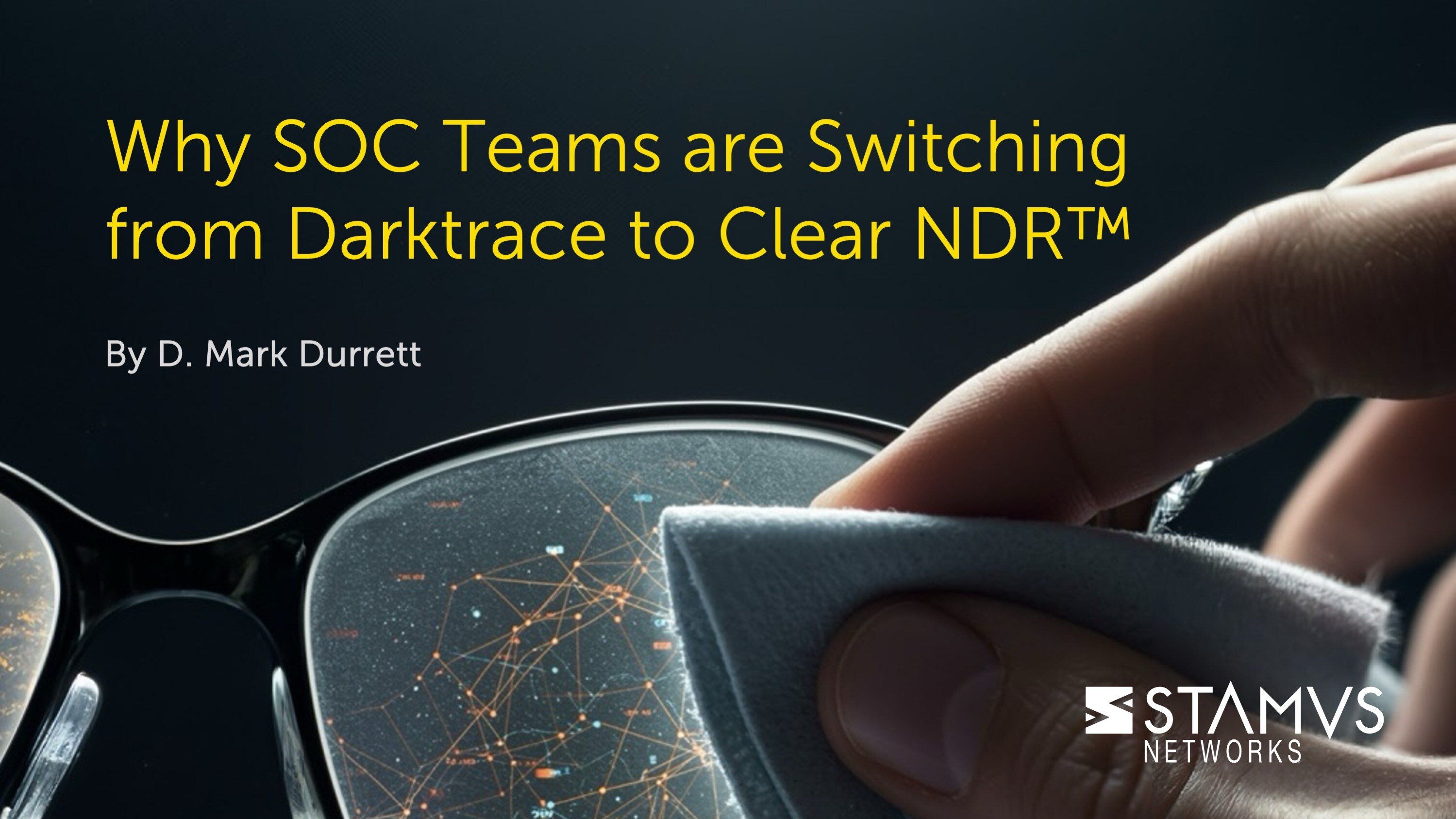Network Detection and Response (NDR) comes with several advantages for organizations looking to improve their detection and response capabilities, but what about its disadvantages? No cybersecurity system is perfect, which is why many organizations opt to combine solutions from endpoint detection and response (EDR), extended detection and response (XDR), and NDR vendors to create the most comprehensive security strategy possible. Let’s review the advantages and disadvantages of NDR, and discuss its importance and role in a comprehensive strategy.
What are the disadvantages of NDR?
NDR (network detection and response) faces disadvantages that are common among other network security platforms. Despite these challenges, the value added by NDR usually far outweighs their potential impact, especially when NDR is paired with other complimentary cybersecurity solutions. Here are some challenges commonly faced when deploying NDR
- Encryption: NDR can encounter difficulties in detecting threats within encrypted network traffic, particularly with the widespread use of Transport Layer Security (TLS). As encryption becomes more prevalent, it becomes harder for NDR solutions to analyze the contents of encrypted communication. To address this, organizations can implement measures like SSL/TLS decryption proxies or specialized decryption software that allows their security teams to inspect encrypted traffic.
- False Positives and Negatives: Like any threat detection system, NDR solutions may generate false positives and false negatives. False positives lead to benign activities being mistakenly flagged as threats, resulting in unnecessary alerts and resource diversion. False negatives occur when actual threats go undetected, posing a risk to the organization. Fine-tuning NDR systems to minimize false positives while maintaining high detection accuracy can be challenging, but modern systems, such as the Stamus Security Platform, offer solutions to this problem.
- Limited Endpoint Visibility: NDR primarily focuses on monitoring and analyzing network traffic, offering insights into network-based threats and behaviors. However, it provides limited visibility into endpoints — individual devices — and user activities on those devices. To enhance threat detection originating from endpoints, integration with Endpoint Detection and Response (EDR) solutions may be necessary for more comprehensive coverage.
- Scalability and Performance: NDR may face scalability and performance challenges in large and complex network environments. Real-time processing and analysis of vast amounts of network data can demand significant computational resources. Organizations must select NDR systems capable of handling high network traffic volumes to meet their specific performance requirements.
- False Sense of Security: Implementing any threat detection and response system, including NDR, should not lead to reliance on a single system. Organizations, whether favoring NDR, EDR, or XDR, should integrate multiple systems to maximize coverage and avoid a false sense of security. Neglecting other crucial security measures is not advisable.
What are the benefits of NDR?
The benefits of network detection and response (NDR) are plentiful, especially when compared to other threat detection and response platforms like EDR or XDR. Ultimately, combining a combination of these complimentary systems can lead to the most effective and comprehensive cybersecurity strategy. Organizations that deploy NDR experience the following outcomes:
- Advanced Threat Detection: Traditional security measures struggle to identify advanced threats, but NDR overcomes this limitation. By utilizing advanced analytics, machine learning, and behavioral analysis, NDR can detect unusual patterns and behaviors. This proactive approach enables early identification of sophisticated threats such as zero-day exploits and advanced persistent threats (APTs).
- Visibility and Context: NDR offers comprehensive visibility into network activities, shedding light on user behavior, device interactions, and application usage. This contextual information is essential for effective threat detection and response, empowering organizations to understand the dynamics within their networks.
- Real-time Network Monitoring: Operating in real-time, NDR enables continuous monitoring of network activities. This capability significantly reduces "dwell time” — the duration a threat goes undetected. As a result, it minimizes the potential impact of security incidents by swiftly identifying and responding to threats.
- Insider Threats: NDR excels at identifying unusual user behaviors that may indicate insider threats or compromised accounts. Through continuous monitoring and establishing baselines for normal behavior, NDR systems can detect deviations that signal malicious intent or unauthorized access.
- Improved Incident Response Time: NDR automates certain actions and provides timely alerts to cybersecurity teams, facilitating rapid incident response. This swift response is critical for preventing the escalation of security incidents and minimizing the damage caused by a breach.
- Adaptability to Evolving Threats: In the dynamic cybersecurity landscape, new threats emerge regularly. NDR's adaptive nature, employing mechanisms like machine learning and updated threat intelligence, allows organizations to stay ahead of evolving threats by dynamically adjusting to new attack vectors and tactics.
- Reducing False Positives: NDR employs sophisticated analytics to minimize false positives. This ensures that security teams focus on genuine threats, enhancing the efficiency of cybersecurity operations by avoiding unnecessary investigations into benign events.
Why is NDR so important?
NDR is so important because it provides increased network visibility, which unlocks key insights into network infrastructure and user behaviors. The best network detection and response products give organizations a granular view of network activity, enabling them to perform three vital functions:
- Early Threat Detection: By maximizing network visibility, organizations can identify malicious activities and indicators of compromise (IOCs) at their earliest stages. Network traffic holds essential information to spot abnormal behaviors, suspicious communication patterns, and unauthorized activity. This early detection empowers security teams to respond promptly and mitigate threats before they cause significant damage or compromise sensitive data.
- Rapid Incident Response: Increased network visibility enables real-time monitoring and analysis of network traffic, allowing organizations to respond swiftly to security incidents. Clear visibility into network activities helps security teams identify the incident's scope, trace its origin, and take immediate action to contain and remediate the threat. Timely incident response minimizes potential damage, reduces downtime, and aids in quickly restoring normal operations.
- Comprehensive Threat Analysis: Expanded network visibility facilitates in-depth analysis of network traffic, aiding organizations in understanding the context, nature, and scope of potential threat proliferation. By scrutinizing network communication patterns, traffic flows, and data exchanges, security teams can identify malicious behavior, detect malware infections, unveil hidden threats, and gain valuable insights into attackers' tactics, techniques, and procedures (TTPs). This comprehensive threat analysis empowers security teams to develop effective countermeasures and enhance overall defenses.
Why do we need NDR?
NDR tools fulfill vital functions that are often overlooked by other security solutions, filling in the gaps left by tools like EDR or XDR. By including NDR in your organization’s security stack, you can maximize visibility into network environments and enjoy all the benefits that result from network-based threat detection. Here are four reasons why many organizations choose NDR tools:
- NDR Fills Gaps Left by EDR and Similar Tools:
EDR systems require installing an agent on every device, creating coverage gaps in certain environments like those with IoT devices, many medical facilities, or organizations that allow employees to use their personal devices for work. NDR — operating without agents — provides real-time monitoring for optimal visibility in any environment. - NDR Secures Cloud and Hybrid Environments:
As cloud and hybrid setups become more common, the need for security systems that can monitor these environments is increasing. NDR utilizes network telemetry data — a valuable source for monitoring, analysis, threat detection, and investigation — to monitor cloud assets that use the network for communication. - NDR Benefits Both Security and IT Teams:
Beyond its security advantages, NDR is beneficial for IT teams. It offers heightened visibility into the network, assisting in diagnosing network issues and optimizing overall network performance. - NDR Empowers Zero-Trust Security:
The widely adopted zero-trust security model requires continuous verification of users, devices, and applications on the network. Achieving this verification is challenging without comprehensive visibility into the network, a task easily accomplished with NDR.
Forming a comprehensive cybersecurity strategy
The best way to mitigate the various disadvantages of different threat detection and response solutions is to integrate complementary systems that work together to provide maximum coverage across different environments. To learn more about XDR, EDR, NDR, and how the three solutions come together to form a comprehensive security strategy, read our whitepaper “EDR, NDR, and XDR: Exploring Three Approaches to Threat Detection and Response”.
To be notified of new blog posts and other news, make sure to subscribe to the Stamus Networks blog and the Stamus Spotlight Monthly Newsletter, follow us on Twitter, LinkedIn, and Facebook, or join our Discord.






